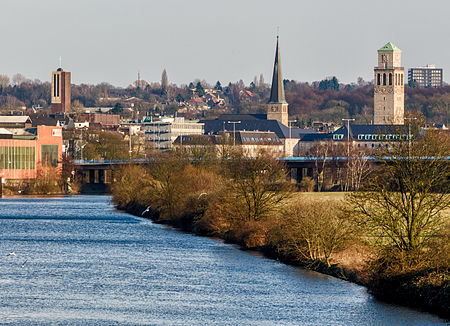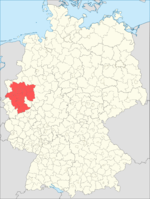Mülheim

Mülheim, officially Mülheim an der Ruhr (German pronunciation: [ˈmyːlhaɪm ʔan deːɐ̯ ˈʁuːɐ̯] (listen)) and also described as "City on the River", is a city in North Rhine-Westphalia in Germany. It is located in the Ruhr Area between Duisburg, Essen, Oberhausen and Ratingen. It is home to many companies, especially in the food industry, such as the Aldi Süd Company, the Harke Group and the Tengelmann Group. Mülheim received its town charter in 1808, and 100 years later the population exceeded 100,000, making Mülheim officially a city. At the time of the city's 200th anniversary with approximately 170,000 residents, it was counted among the smaller cities of Germany.
Excerpt from the Wikipedia article Mülheim (License: CC BY-SA 3.0, Authors, Images).Mülheim
Leineweberstraße, Mülheim an der Ruhr
Geographical coordinates (GPS) Address Nearby Places Show on map
Geographical coordinates (GPS)
| Latitude | Longitude |
|---|---|
| N 51.4275 ° | E 6.8825 ° |
Address
Leineweberstraße 55
45468 Mülheim an der Ruhr (Rechtsruhr-Süd)
North Rhine-Westphalia, Germany
Open on Google Maps









